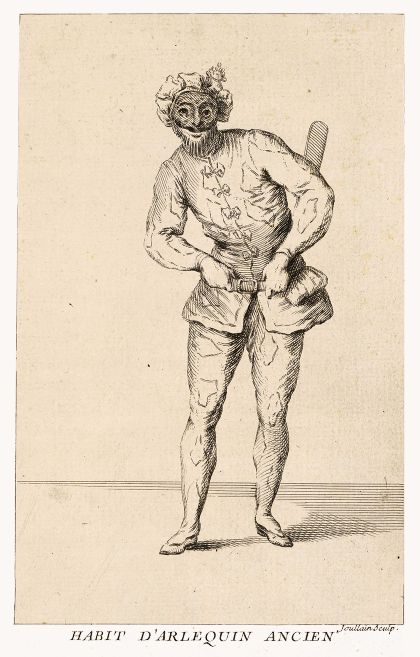

Harlequin is definitely the more known and cherished mask of the Commedia dell'Arte. And the more powerful character too, it would be hard to imagine a Commedia dell'Arte play without him.
We know for sure that he is:
How not to sympathize and possibly identify with him?
The Harlequin mask, original of Bergamo, starts to get his strenght around mid XVI century in various ways, depending on the acting Company.
Born a Zanni like several others, he gains since the beginning his "batocio", to make his stage presence more powerful, and he evolves according to the public preferences, but ending up to be the main attraction in every play.
Only Scaramouche was able to receive so much affection from its public, but this is something that belongs to the internationalization (France, especially!) of the Commedia dell'Arte plays.
